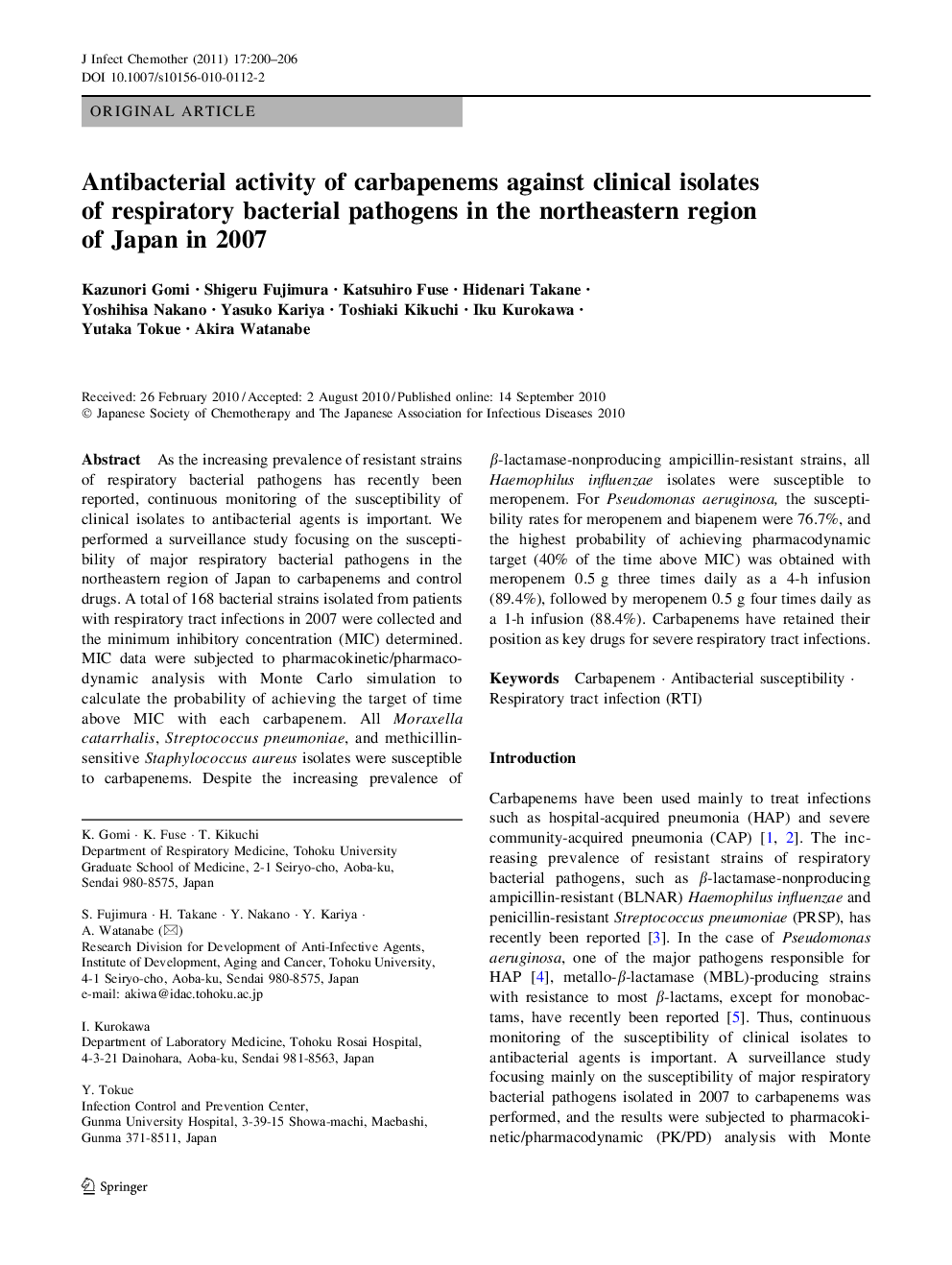| Article ID | Journal | Published Year | Pages | File Type |
|---|---|---|---|---|
| 3377264 | Journal of Infection and Chemotherapy | 2011 | 7 Pages |
As the increasing prevalence of resistant strains of respiratory bacterial pathogens has recently been reported, continuous monitoring of the susceptibility of clinical isolates to antibacterial agents is important. We performed a surveillance study focusing on the susceptibility of major respiratory bacterial pathogens in the northeastern region of Japan to carbapenems and control drugs. A total of 168 bacterial strains isolated from patients with respiratory tract infections in 2007 were collected and the minimum inhibitory concentration (MIC) determined. MIC data were subjected to pharmacokinetic/pharmacodynamic analysis with Monte Carlo simulation to calculate the probability of achieving the target of time above MIC with each carbapenem. All Moraxella catarrhalis, Streptococcus pneumoniae, and methicillin-sensitive Staphylococcus aureus isolates were susceptible to carbapenems. Despite the increasing prevalence of β-lactamase-nonproducing ampicillin-resistant strains, all Haemophilus influenzae isolates were susceptible to meropenem. For Pseudomonas aeruginosa, the susceptibility rates for meropenem and biapenem were 76.7%, and the highest probability of achieving pharmacodynamic target (40% of the time above MIC) was obtained with meropenem 0.5 g three times daily as a 4-h infusion (89.4%), followed by meropenem 0.5 g four times daily as a 1-h infusion (88.4%). Carbapenems have retained their position as key drugs for severe respiratory tract infections.
